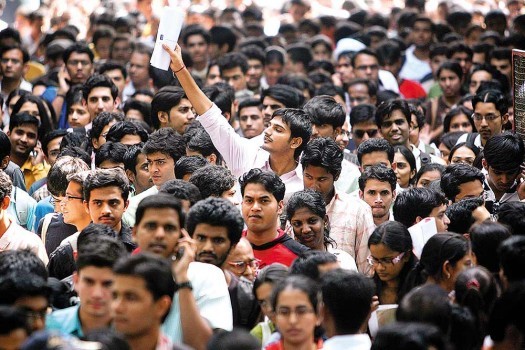
"One good thing I like about this 10% quota for upper caste is that it de-stigmatises the word 'quota', which was often used as a slur against minorities by the upper caste in colleges/govt jobs. Now suddenly, it isn't a cuss word" - this post by a popular Twitter user sums up the country's current stand on reservations quite well.
The government has introduced a bill in Parliament — pending approval in the Rajya Sabha — to grant 10 percent reservation to "economically weaker sections" of the general category. Although the timing of the move has been questioned and the proposal has been dubbed a "jumla" and "election stunt", it has also been welcomed by a large section of society, which has, for long, felt deprived of the benefits of quota.
Since the VP Singh government implemented the recommendations of the Mandal Commission in 1990, caste-based protests have been commonplace and vote-bank politics over the same have only become more and more entrenched in the Indian scenario.
The commission was formed in 1979 to "identify the socially and educationally backward classes" of India and come up with suggestions for their uplift. The panel had recommended 27 percent reservation for OBCs in government jobs and seats in educational institutes estimating that 52 percent of the total population of India (excluding Scheduled castes and Scheduled Tribes), belonging to 3,743 different castes and communities, were "backward". This was in addition to the 15 percent also reserved for SC candidates and 7.5 percent for STs, bringing the total reservation to 49.5 percent.
There were widespread protests — bandhs, hartals and dharnas — after the Mandal Commission report was approved. This included massive student protests and self-immolation attempts, and countrywide agitations by job aspirants who opposed opportunities being granted on anything but merit. Besides the increase in reservation, the fact that the commission had based its report on the 1931 census, not taking the socio-political transformation in society into account, only added fuel to the fire, and the unrest ultimately led to VP Singh resigning from office.
Now, if the 10 percent quota for the general category poor is brought in, it will not only eat into government jobs and seats at educational institutes, but will also surpass the Supreme Court's 50 percent cap on reservation. However, the step is unlikely to witness much protest as it includes benefits for a number of classes.
The new proposal for 10 percent quota will not only pour water over people's simmering anger towards the BJP, but will also lead to a change in attitude towards the Mandal Commission, which has, for decades, been the target of scathing attacks by anti-reservationsists and the section of society that felt neglected by the government. The bitterness towards the commission — and towards reservation in general — is likely to turn more tasteful for this influential section of society that the government is now trying to appease.
This is because the quota bill comes a number of pros for the general category poor, including Jats, Marathas, Gujjars, Banias, Rajputs (Thakurs) and Kammas, as well the poor among the Muslim and Christian communities, groups that have voiced their demand for reservation dozens of times.
Moreover, the Centre also said that if the bill on 10% quota is approved, over 180 central institutes, including IIM and IITs, will create an additional 10 lakh seats, which will lead to higher student intake. Besides in government jobs, it was a major contention of students that seats that should have been given out on the basis of merit were being reserved for whom they believed were undeserving candidates. It is unlikely that the same students will oppose being granted the same benefit now that the carrot has been dangled before them.
These factors, along with reports that the bill may also include private institutes in its ambit, may finally dissolve people's distaste for the Mandal Commission. People's disillusionment with the BJP government became evident with the saffron party's defeat in three states in the recently-concluded Assembly elections. The party's defeat was partly due to its focus on lower castes and constant attempts to appease them in a bid to win their votes. Add to this the ordinance approved to circumvent the Supreme Court's order diluting the SC/ST Act, and anger of the middle-class poor was guaranteed.
Things have changed now. The general category has got what it has wanted for a long time, and the Mandal Commission's recommendations are but a dot in the horizon.
Furthermore, the distaste for the Mandal Commission may be transferred to courts, which are likely to see litigation against the proposed quota. Granting 10 percent reservation to the general category poor has a high likelihood of being struck down in court as it violates the Supreme Court's 50 percent cap on quota.
In another judgement pronounced soon after the recommendations of the Mandal Commission were implemented, the Supreme Court had struck down economic position as a basis for reservation. In its judgment, the court had said they cannot allow quota for the "economically backward" as the Constitution defines "backward" on the basis of social and educational standing. This could prove to be a major legal hurdle for the Centre, as the basis for the 10 percent quota is people's economic backwardness.
Be it anger towards the Mandal Commission or courts, the BJP-led government has nothing to lose here, given that it has got what it wanted. Besides forcing the Opposition into a tricky situation — opposing the bill could risk losing out on the support of an influential section of society — the party has also established its pro-poor reach and can blame it on courts if the proposal is struck down.


.jpeg)

